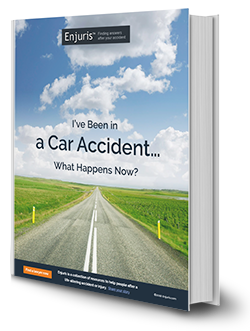Hablamos español.
Why pedestrian-vehicle collisions happen and what laws apply in the Lone Star State
A "pedestrian" is any person on foot (whether walking, jogging, running, or otherwise). When a pedestrian is hit by a car, truck, motorcycle, or another motor vehicle, the crash is referred to as a “pedestrian accident.”
Unfortunately, the Lone Star State isn’t immune to pedestrian accidents. On the contrary, pedestrian accidents occur frequently in Texas—especially at night and in large cities like Houston, Dallas, Austin and San Antonio.
If you or a loved one is injured in a pedestrian accident, you may be able to receive compensation for your injuries. Whether or not you will receive compensation depends primarily on whether someone other than you caused the accident.
Pedestrian accident statistics
- According to the NHTSA, 5,977 pedestrians were killed in pedestrian accidents in the United States in 2017. On average, a pedestrian died every 88 minutes.
- In Texas, 617 pedestrians were killed in 2018. Think this sounds like a lot for one state? It is. Texas is consistently ranked as one of the most dangerous states in the country for pedestrians.
- Not all places in Texas are equally dangerous for pedestrians. Most pedestrian fatalities occur in large cities like Austin, Houston, and McAllen.
- In Austin, pedestrians made up 42% of all traffic deaths in 2018—and more pedestrians died on Interstate 35 than on any other road in the city.
Cities like Houston and McAllen are particularly dangerous metro areas for pedestrians. Both cities were included in a list of the 20 most dangerous cities for pedestrians.
Common causes of pedestrian accidents
The majority of pedestrian accidents happen because motor vehicle drivers are focused on other cars (or their smartphones). However, pedestrians can cause pedestrian accidents as well.
Here are some of the most common causes of pedestrian accidents:
- Failing to give the right-of-way to pedestrians
- Driving while distracted
- Ignoring traffic signals (including walk signals) and rules
- Driving while intoxicated
- Walking while under the influence of drugs or alcohol
How can pedestrians help prevent injuries and deaths from motor vehicle crashes?
The Centers for Disease Control and Prevention (CDC) has 3 tips for pedestrians:
- Pedestrians should increase their visibility at night by carrying a flashlight when walking and by wearing retro-reflective clothing.
- Whenever possible, pedestrians should cross the street at a designated crosswalk or intersection.
- Pedestrians should walk on a sidewalk or path whenever possible. Whenever this isn’t possible, pedestrians should walk on the shoulder facing traffic.
Common pedestrian accident injuries
Unlike motor vehicle drivers and passengers, pedestrians are completely unprotected. Perhaps someday a startup out of Silicon Valley will invent airbags for pedestrians, but it hasn’t happened yet.
The result of this lack of protection is that pedestrian accidents often result in serious injury and even death.
Think about it: Not only can the initial impact cause significant injuries, but further injuries can be sustained when the person lands.
Common pedestrian accident injuries include:
- Brain injuries
- Spinal injuries
- Paralysis
- Loss of limbs
- Death
- Broken bones
- Lacerations
Texas right-of-way laws for pedestrians
Under Texas law, pedestrians must obey official traffic control devices (signals, traffic signs, pavement striping, etc.) unless a police officer is overruling the traffic control device.
If there isn’t a sidewalk to use, pedestrians must use the left side of the road facing traffic—that way, they can see whoever is coming toward them.
Other important Texas laws for pedestrians and motor vehicle drivers to keep in mind include:
- Pedestrians may not stand in a roadway to solicit a ride, contribution, employment, or business from an occupant of a vehicle
- Vehicles must yield to pedestrians crossing at designated crosswalks (unless there is a controlling traffic signal)
- Pedestrians must not suddenly leave a curb or other place of safety and proceed into a crosswalk in the path of a vehicle so close that the driver can’t yield
- Pedestrians aren’t allowed to cross 2 adjacent intersections unless they’re in a marked crosswalk
- Pedestrians may not walk along and on a roadway if an adjacent sidewalk is provided and is accessible to the pedestrian
There are, of course, additional laws, but they’re very specific to certain circumstances and don’t apply to most pedestrians. (For instance: “No person may carry a white cane on a public street or highway unless the person is totally or partially blind.”)
Fault in Texas pedestrian accidents
So what happens if you’re injured in a pedestrian accident? Can you sue someone for your injuries?
It depends. To receive compensation for your injuries, you have to show that someone else caused the accident that led to your injuries. In most cases, this means you have to show that someone else was negligent.
Motor vehicle drivers are required to exercise due care to avoid colliding with a pedestrian on a roadway. If a driver fails to exercise due care (by, for example, texting while driving) and collides with a pedestrian, the driver is probably negligent.
In some cases, the accident might partially be the driver’s fault and partially the pedestrian’s fault.
Texas follows the theory of modified comparative fault. This means that a plaintiff’s damages are reduced by their percentage of fault. What’s more, if the plaintiff was more than 50% at fault, they’re prohibited from recovering any damages.
Let’s look at a hypothetical.
Case example: Texas pedestrian accident
Willie Nelson was driving his Ford pickup down Congress Avenue in Austin, Texas while changing a song on his smartphone. As Willie approaches a crosswalk, Troy Aikman, who’s chasing after a poorly thrown football, suddenly runs into the crosswalk. Willie Nelson collides with Troy Aikman. Troy is injured and sues Willie.
In the above hypothetical, a court might find that Willie Nelson was 60% at fault for the accident (because he wasn’t watching the road) and Troy Aikman was 40% at fault for the accident (because he ran suddenly into the road).
Under the theory of modified comparative fault, Troy would only be able to recover 60% of his damages. While this isn’t ideal for him, if the court had found him 51% at fault, he would be prohibited from recovering any damages.
Were you or a loved one injured in a Texas pedestrian accident? Find an attorney using the Enjuris law firm directory for Texas.
Need a lawyer?
Hablamos español.
What does an injury lawyer do?
A personal injury lawyer helps individuals who have sustained injuries in accidents to recover financial compensation. These funds are often needed to pay for medical treatment, make up for lost wages and provide compensation for injuries suffered. Sometimes a case that seems simple at first may become more complicated. In these cases, consider hiring an experienced personal injury lawyer. Read more



